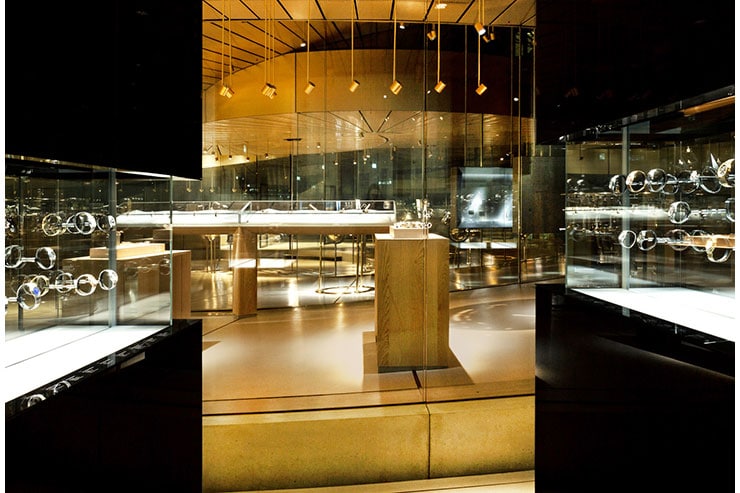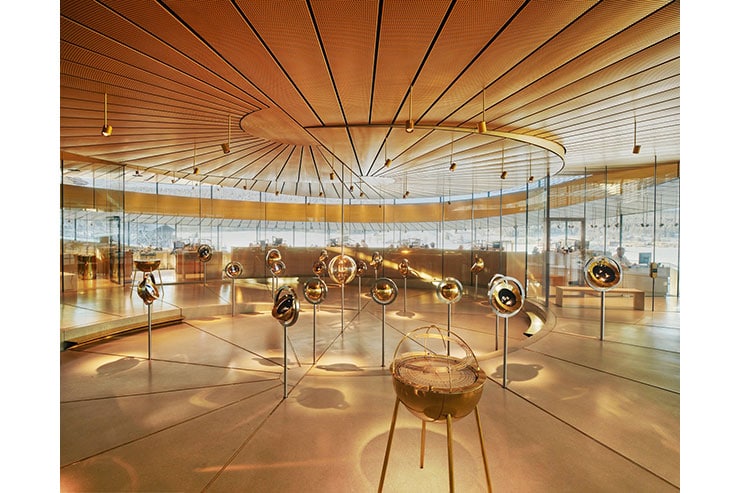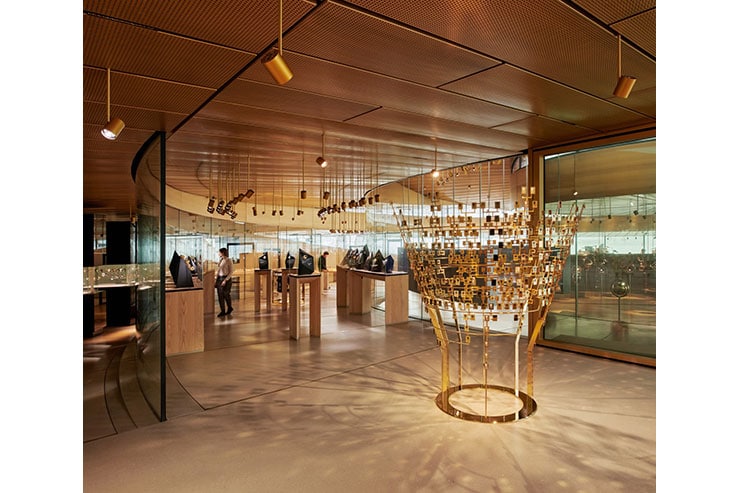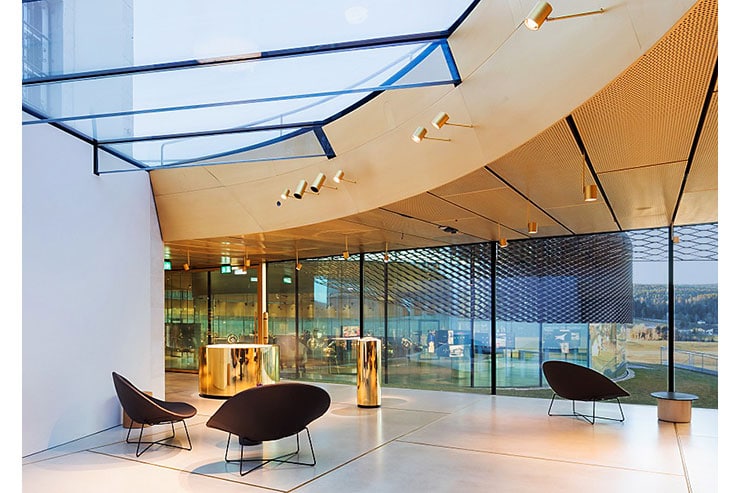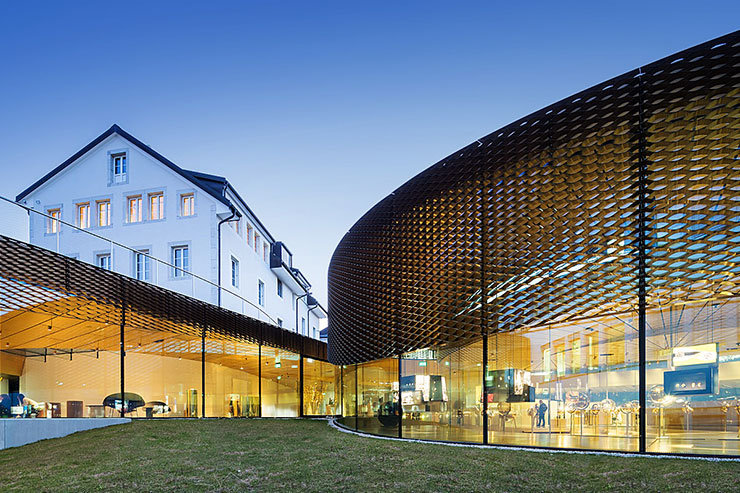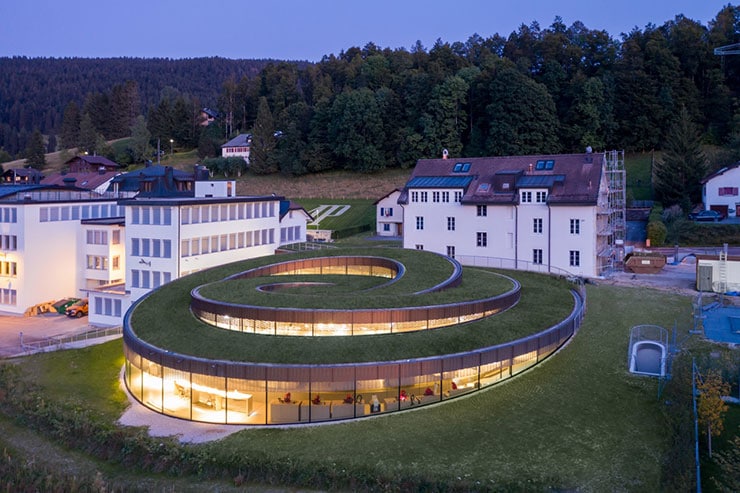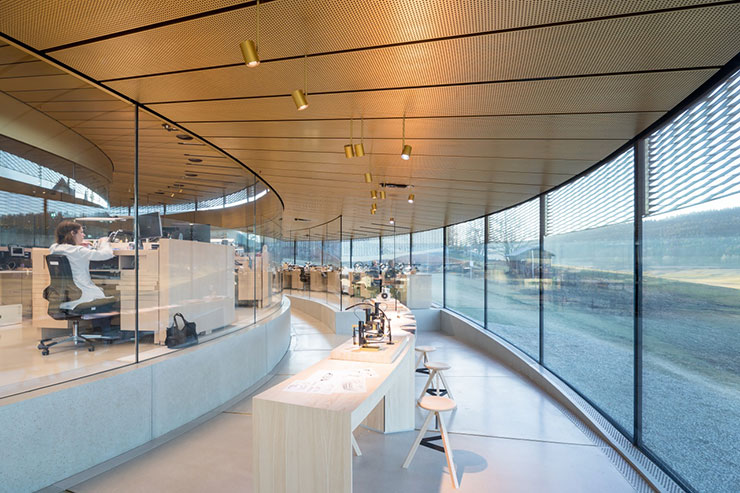- ABOUT
- JUDGING
- CONTACT
- MORE
- 2024 Entries
- Installations 2024
- Past Winners
- Subscribe
- [d]arc directory
- arc magazine
- darc magazine
Musée Atelier Audemars Piguet, Switzerland
ProjectMusée Atelier Audemars PiguetLocationLe Brassus, SwitzerlandLighting DesignBelzner Holmes und Partner Light-Design, GermanyArchitectBjarke Ingels Group, Denmark; CCHE Lausanne & CCHE La Vallée , SwitzerlandAdditional DesignScenography/Exhibition Design: Atelier Brückner,Lighting SuppliersEigenart Leuchten, iGuzzini, Zumtobel, Fluora, Flos, Davide Groppi, Bega, Gubi, Giopato CoombesPhotographyIwan Baan; Giovanni Emilio Galanello
The “Musée Atelier” of the watchmakers Audemars Piguet in Le Brassus/Switzerland combines the historic production building and a new spiral-shaped glass building designed by Bjarke Ingels Group (BIG) . The new building contains the main exhibition designed by Atelier Brückner (ATB). 300 chronometers sum-up 200 years of watchmaking art in the Vallée-de-Joux. The warped roof-structure of the single-storey new building rests on the glass façade which runs through the building as a double helix. The ceilings are made of brass panels, the floor is a light-coloured terrazzo that follows the topography. Two fully functioning watchmaker workshops are part of the staging.
Lighting Concept
The building opens towards northwest. The warped roof and the westward rotation allow sunlight into the structure. The artificial lighting is integrated unobtrusively within the unique architecture. Only the lighting of the watches and exhibits should be obvious – all integrations closely coordinated with the architecture. It leads to a very clear spatial effect where the technical finesse naturally blends into the architecture.
To avoid unpleasant mirror effects due to the curved glass, the maxim was the greatest possible glare reduction and not to illuminate the visitors. The transparency of the building is enhanced by illuminating all vertical backgrounds also during the day. This emphasizes the dimensions and enhances the spatial perception. The concentration of the spotlights in the areas of the exhibits organically enhances the architecture and creates a link between scenography and architecture. The visible lighting instruments thus enter a perfect symbiosis with the architecture.
In order to stage the watches according to their value, it is necessary to emphasize each watch individually singling them out from their surroundings. Each watch is illuminated from left and right by warm-white and cool-white light at an angle of 30°-45° from positions over the edges of the showcases. No negative shadow effects of the visitors observing the exhibits from close distances occur.
Lighting Technology
3°-Spotlight positioned 1.5m from each watch creating a visible lightprint of 10cm around each watch.
Further Instruments
• 10°-Spotlight
• 36°-Floodlight
• Wallwash RGBW
Colour Temperatures
The juxtaposition of warm and cold-white light allows an optimal 3D-presentation of the exhibits applied to both the ceiling-mounted and showcase-integrated lighting.
• Warm-white light: 3.000°K, 3.500°K or 4.000°K and correction filters (+250°K) implemented according to the materiality of the watches.
• Cool-white light: 5.500°K
Systems:
Spotlights
Bespoke brass-coloured Eigenart-Leuchten long-neck Gallery_80 Spotlight mounted to jacks in the ceiling joints. Individual lengths of “neck” according to position in the warped ceiling to create identical lighting distances to each watch.
Wallwash
Bespoke brass-coloured long-neck Eigenart-Leuchten Gallery_100 RGBW.
Jackpoints
Bespoke Eigenart-Leuchten low-voltage mounting points in the joints of the brass ceiling connected to centralized “driver-garages”, DMX.
Showcase-Integrated Lighting:
Bespoke Eigenart-Leuchten Mini-Punto Spotlights plus adjustable tunable-white LED-strips, DMX.
Service Lighting:
IGuzzini Laserblade “invisibly” recessed in brass ceiling joints.
Task lighting:
Zumtobel Lincor, DALI, recessed in black ceiling cut-outs – luminance 800lx, perforations arranged radially singling-out the workshops within the exhibition.
Waldmann-Leuchten, 2.500lx on work surface
Decorative lamps:
Gubi Semi-Pendant, brass shade
Control system:
Ecue DMX-Light-Control (Osram Sympholight)
